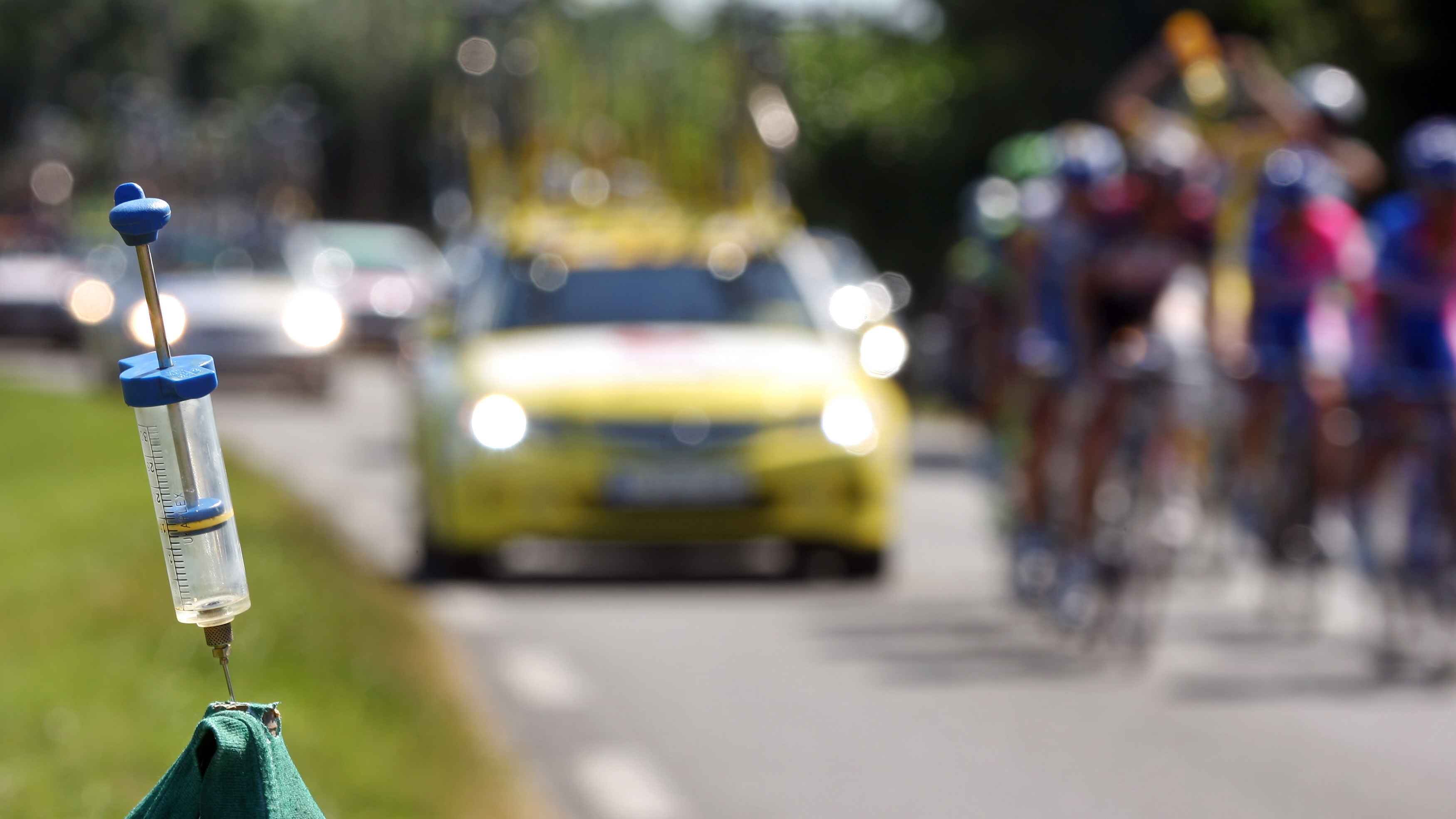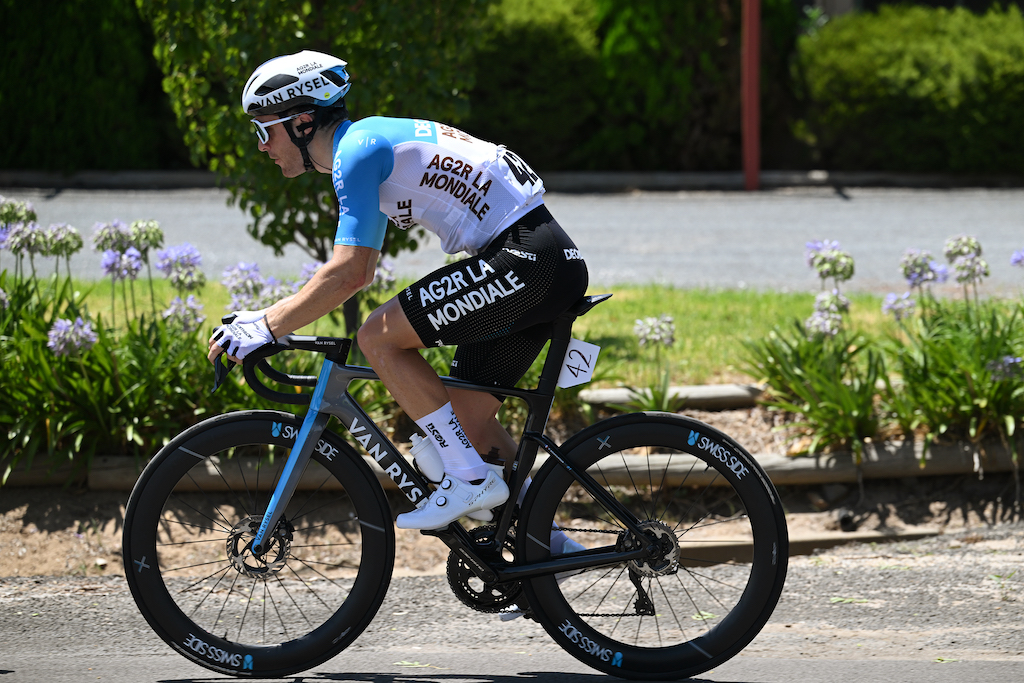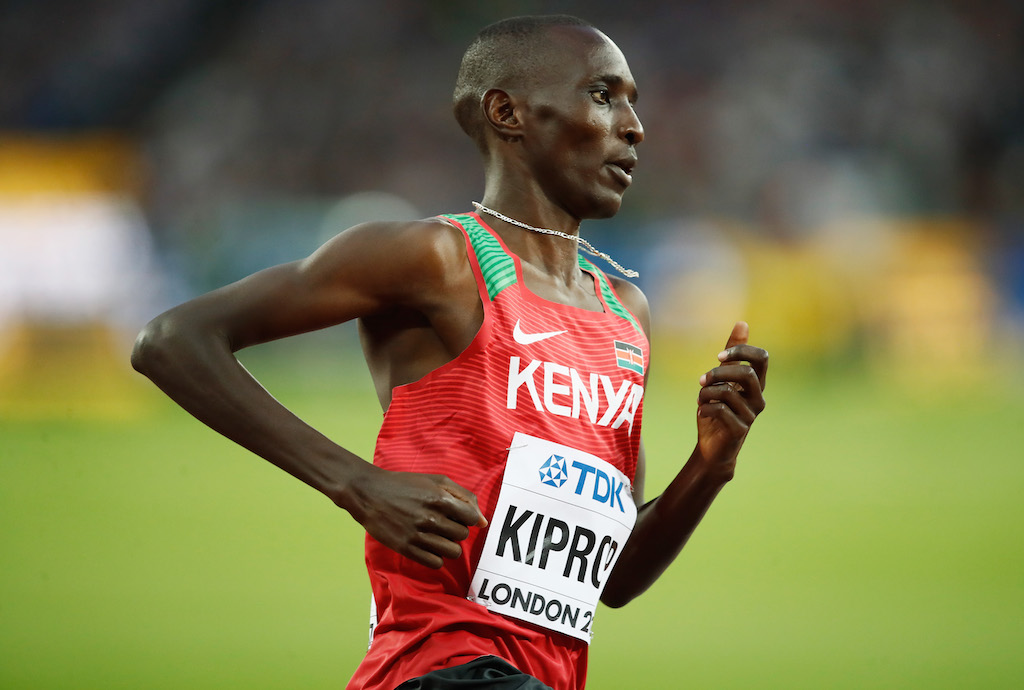
"I was working at the AIS, and the physiology department was led by Professor Chris Gore. USADA commissioned him to review Lance Armstrong’s ABP data. He was my PhD supervisor and got me interested in the passport."
The words of Professor Laura Lewis, director of science at the United States Anti-Doping Agency, formerly at the Australian Institute of Sport, and one of the world’s leading experts on the Athlete Biological Passport (ABP).
Reid Aiken, deputy director of the ABP at WADA, the World Anti-Doping Agency, had flagged up Lewis’ haematological expertise (see part one), specifically her encyclopaedic knowledge of the potential blind spot that is dosing micro quantities of the blood-booster erythropoietin (EPO) and altitude. So, one email dropped, a swift reply, and we were away, starting with a reminder of what the ABP measures…
The anti-doping alarm bells are ringing
"The passport has a blue line in the middle," says Lewis. "This is the athlete's data points [new red blood cells, aka reticulocytes, and haemoglobin levels] that go up and down. Then there's this adaptive model that WADA owns that calculates an upper and lower limit, which are represented by red lines. These lines start off quite far apart but the more samples you take, the narrower they become and predict within 99% confidence where the athletes' value should lie."
If it's flagged by the model, that's not like an EPO test, says Lewis, which would be a positive; instead, it's an alert. Another expert examines the data and, if the alarm bells continue to ring, two further experts do similar.
"If all of you are saying doping's likely, then you write what's called a 'joint opinion'," says Lewis.
"That's using all the information that you've got at that point, explaining the abnormality, which is sent to the athlete. The athlete then has the opportunity to provide further information that might have impacted the results, like a visit to a hospital. The experts evaluate that new information. If they accept it, nothing happens. If they don't, then you move onto arbitration and the athlete having to defend themselves and potentially a sanction."

Which is the Badlands currently inhabited by French rider Franck Bonnamour, who in March was released by his team, Decathlon-AG2R La Mondiale, after being temporarily suspended by the UCI in February for anomalies in his biological passport.
The alleged transgressions actually happened when racing for B&B Hotels – KTM in 2022. The case continues, meaning we’re not aware of the exact details of the alleged biological passport violations – specifically, we’re unaware if the impact of altitude on haematological values provided part of his defence.
We are aware, however, that this is a common defence. Take Kenya’s former 1500m Olympic champion Asbel Kiprop, who served a four-year ban from 2018 to 2022 after testing positive for EPO. At his defence, the Athletics Integrity Unit (AIU) called Kiprop's explanation an "a la carte menu of reasons why the charges should be dismissed".
Among these, the AIU said, were that the "EPO was naturally produced due to intense exercise at altitude", that it was produced by medication, that the test, or the analysis, was badly conducted or that the sample was spiked.
The three-person panel concluded that high altitude could not explain the presence of EPO in the test and that Kiprop had produced no evidence to support other possible explanations.

In Kiprop's case, his biological passport was used to target when the anti-doping authorities should undertake EPO testing. This synergistic approach is a useful strategy, especially because of the difficulty in separating blood values at altitude and blood values when doping moderate amounts of EPO. As we highlighted in part one, a 2022 paper by Jonas Saugy, entitled 'Altitude and Erythropoietin: Comparative Evaluation of Their Impact on Key Parameters of the Athlete Biological Passport: A Review', revealed that an athlete's blood profile when micro-dosing was "hardly distinguishable from those identified after hypoxic exposure".
It's a scenario Lewis is more than aware of.
"There have certainly been reports of athletes using EPO at altitude to mask its effects. When you're at altitude, your body's natural response to the low levels of oxygen is to produce its own EPO, which accelerates the production of red blood cells. Depending on the individual's response to altitude, it can have similar effects on the markers as blood doping – EPO and blood transfusions – but not to the same magnitude.
"So, it can cause the passport to flag above those upper or lower limits. It's led to some athletes using recombinant EPO at altitude as they feel they can explain the anomaly on their passport."
Inconsistency of altitude
Lewis concedes that micro-dosing EPO at altitude does make it more of an anti-doping challenge, not only due to unpicking one from the other but because of how a cyclist naturally reacts to altitude.
"Some say how you react is down to being a responder or non-responder to altitude," Lewis says. "I've never subscribed to that camp as it's too simplistic. I've been on training camps with elite athletes where they respond one time and don't the next.
"I think it's really related to a number of factors, like the dose of altitude that they're given. So, duration, height of the exposure, but also were they ill when they headed to altitude? Did they have extra stress going on? You really need your body to be in an adaptive state to respond to altitude. It's why athletes who smash themselves at camp to reduce their weight tend not to respond haematologically, whereas if they periodise their training and they're a seasoned pro, and eating the right things and they have enough iron available, they tend to have good responses."
Lewis says that there were attempts to add a more formalised altitude factor to the ABP. "But it was decided that there were just too many variables, so it was decided to enhance the literature around individual responsiveness to altitude and its effect on the markers of the biological passport instead. You then leave it in the hands of the experts who review the passport to really dig deep."

That's why athletes are encouraged to provide as much detail as possible about, say, an altitude camp when they're filling in their ADAMS account. This is WADA's Anti-Doping Administration and Management System, where, among many things, athletes are required to provide a 60-minute time slot every day between 5am and 11pm that anchors an athlete to a specific location for testing.
This detail tangentially led us to discuss a metric entitled 'the kilometre hour', which is how many hours it takes to respond haematologically. (Bear with us, we do circle around to explain this) You can read more about it here. The paper, entitled 'Time for a new metric for hypoxic dose?' and co-written by Lewis, introduced a new way of looking at altitude exposure that combined different altitudes and durations in one unit: kilometre/hours. If you lived and trained at around 2,200m for 22 days (528 hours), that would amount to around 1,161km/hrs.
"Broadly, it takes around 900km/hrs for a sea-level resident to really benefit from altitude," says Lewis, with the model showing an increase of haemoglobin mass of around 2% at 500/km/hr, 4% at 1,000km/hr and 6% at 2,000km/hr. The latter would realise a saving of 10bpm for any given power output or a boost in power of around 20 watts for the same heart rate, which begs the question, why not reach out to [Edmund] Hillary-esque heights in search of even more rarefied air and potentially greater performance?
"There's an altitude sweet spot because the higher you are, the harder it is to perform high-intensity work like VO2 max work," says Lewis. "It's why cyclists might train at around 2,000m in Andorra but will sleep in an altitude tent set to 3,000m.
"The problem is, when an anti-doping control officer comes knocking, even though there is a question about using simulated hypoxia devices, they might be more focused on the fact that they're living at altitude and answer the question incorrectly. That would make a difference because the experts are looking at skews in data that they're being told was at 2,000m but, for 10 hours a night, that response is down to exposure at 3,000m."

So, detail matters to ensure the innocent remain innocent, especially when it comes to altitude. Unless, of course, you are cheating. And when it comes to cheating up high, imagination counts.
"The Aderlass case exposed athletes who headed to altitude and extracted blood while they were there to accelerate the regeneration of new red blood cells [reticulocytes]; you'd return to a 'normal' state faster than if you were taking out blood at sea level," says Lewis.
"Or they'd go to altitude, generate a whole lot more red blood cells and then extract blood at the end of the camp that they might reinfuse back at sea level. They were creative!"
DNA testing and AI are the future (and current)
Lewis is one of many anti-doping experts focusing their efforts on altitude. Another name that keeps cropping up is Nikolai Baastrup Nordsborg, the head of nutrition, exercise and sports at the University of Copenhagen. Nordsborg has led myriad studies into doping and altitude, including the genetic impact.
In the first paper, the Norwegian had 39 subjects randomly assigned to an EPO group, where they'd receive micro-dosing injections of 20 IU per kilogramme of body weight, or to the placebo group, where they received a saline injection. (The EPO levels seen in the 'naughty 90s' and into the 2000s, and before cycling adopted the ABP in 2008, were over seven times that amount.) They trained at both sea level and altitude, and each individual received 11 injections, given intravenously every second day for three weeks.
As an aside, samples were taken via dried blood spot (DBS) testing that WADA approved in 2021. DBS is a form of blood sampling where samples are blotted and dried on filter paper, and hold many advantages over traditional blood sampling, including they're less invasive as you only require a drop or two and they're cheaper.

What were Nordsborg and his team looking for?
Genetic markers identified from previous research he'd undertaken that were "sensitive to blood manipulation". For the lab coats amongst you, they were 5'-aminolevulinate synthase (ALAS2), an enzyme involved in haemoglobin biosynthesis and specific to erythropoiesis, and carbonic anhydrase 1 (CA1), an enzyme involved in different cell processes, including cell respiration, and indirectly involved in erythropoiesis. And as Nordsborg suspected, his results showed that both genetic markers were significantly higher when microdosing EPO to altitude alone.
Nordsborg also examined the impact of altitude and injecting EPO on iron metabolism. The two main regulators of iron availability, hepcidin and erythroferrone (ERFE), are "sensitive to altered erythropoietic activity". Vis-à-vis, Nordsborg hypothesised, and then showed, that they are both "sensitive markers in an anti-doping context".
Looking in a different place
So, despite the difficulty in separating legal and micro-dosing methods of changing your blood profile, it's not impossible. But is it the panacea of modern-day anti-doping? Maybe not. "One of the most enlightening studies I undertook at the AIS was at the 2013 Tour of Qinghai Lake in China, where we were working with the Australian national team and Drapac," says Lewis. "It's the highest race in the world and features one climb that peaks at over 4,100m.
"The main reason we chose that race was down to two extreme and conflicting stimuli," Lewis adds. "The first is obviously the altitude that should see a significant increase in haemoglobin. The second is down to the number of stages [which back then numbered 13 but now numbers eight]. Multi-stage racing has been shown to dilute haemoglobin. You're not destroying it, but the fluid component of blood, known as plasma, expands. It's your kidneys' natural response to the stress you're applying day after day.
"The question that was relevant to the passport was, at altitude, which one will 'win' – the increase in haemoglobin or the increase in plasma volume? I thought that the altitude would win because oxygen is pretty important! But I was wrong – every rider's haemoglobin level dropped because of the amount plasma volume had expanded. We also tested a Chinese team who were natives at that altitude and the results were the same – haemoglobin levels drop, plasma volume rises.

"That was really important information because it showed us that plasma volume, particularly in cycling over many long days, could actually be more of a confounder to the passport than altitude itself. I think we have a good handle on altitude, albeit because micro-dosing does raise the chances of false positives, it's important for anti-doping organisations to continue with EPO tests hand in hand with the ABP. But then the way that plasma volume can change with tapering or increased training loads, that's a little bit harder to quantify."
To that end, WADA has directed money into further research into plasma volume. "I'm part of a working group that's looking at quantifying plasma volume in the real world, in repeatable fashion, and not just in the lab," says Lewis. "That's a challenge. But not impossible. A study came out of Qatar from Louisa Lobigs that could predict plasma volume based on simple chemistry markers from a blood test.
"We tested it out at the Tour Down Under in 2020, just before COVID-19, and it predicted the changes in plasma volume really well. It'd involve another blood test and tube to be taken from an athlete at the same time as the ABP, but it could give you more confidence in, is there a plasma volume shift related to this?" In other words, it'd take into account the impact of altitude on haemoglobin levels and the plasma-volume impact of racing hard many days over.
Raphael Faiss, research manager at the Centre of Research and Expertise in Anti-Doping Sciences (REDs) at the University of Lausanne, who we met in part one, is currently utilising machine learning to estimate what a rider's plasma volume should be at any given time; artificial intelligence is used to define normal patterns and patterns that correspond with doping.
In fact, WADA has several ongoing AI projects that focus on different facets of the ABP, including the ability to flag up 'urine exchange'; in other words, to crack down on athletes looking to pass off somebody else as them during a drug test. From 2012 to 2019, WADA looked into more than 60,000 cases and discovered a doppelganger pattern in 130 of them.
The most recent high-profile case concerned Kenyan middle-distance runner Michael Saruni, who in February received a four-year ban from all competition by sending a look-alike to give blood and urine samples. He was alleged to have walked into a bathroom after the national trials for the 2022 World Championships accompanied by another man before switching clothes and sending him to be tested. His elaborate ruse didn't fool an anti-doping official, however, who "noticed that the person did not look like an athlete who had just finished a race". Saruni was later discovered in a toilet cubicle by investigators, but rather than handing himself in, he tried to escape by leaping over a barred wall.
Reid Aiken, deputy director of the ABP at WADA and another expert we met in part one, told us that WADA is working with the German Institute for Artificial Intelligence to identify sample swapping via an AI-led pattern-recognition tool. If suspicion is aroused via AI, the urine samples that were taken for the steroidal module of the ABP can then be DNA tested.
All of these are innovations that will hopefully bolster the effectiveness of the ABP in its efforts to remain relevant, especially when headlines are directed to projects like the Enhanced Games, which would do away with drug testing altogether. It's this evolution that's so important, says Lewis, for the identification of cheats and the protection of the innocent.
"The ABP's been in use for over 15 years. In that time, doping's changed and now the [suspicious] passports look very different. They're not textbook ECG profiles. Athletes are much smarter and more sophisticated. I don't think we should ever get rid of the ABP because it's such a good deterrent, but things need to evolve so that it doesn't become redundant. The concern is that anti-doping organisations spend a lot of money on ABP tests – it's expensive to collect, transport and analyse the blood – and if you're not getting any cases or not seeing any benefit from an organisation perspective, you start to question, why are we pouring all that money into this?
"I hope in another 15 years the ABP is still around. But we need to better educate the athletes on what information we need to ensure they're on a level playing field with the experts on the ABP side. If the athlete had low iron, for instance, but didn't feel it relevant to flag up. Better education will help them. If it's in the same format as now, we'd have failed the athletes. We must move with the times to ensure the ABP's as useful as possible."
Thank you for your Cyclingnews subscription. We use our subscription fees to be able to keep producing all our usual great content as well as more premium pieces like this one. Find out more here.







